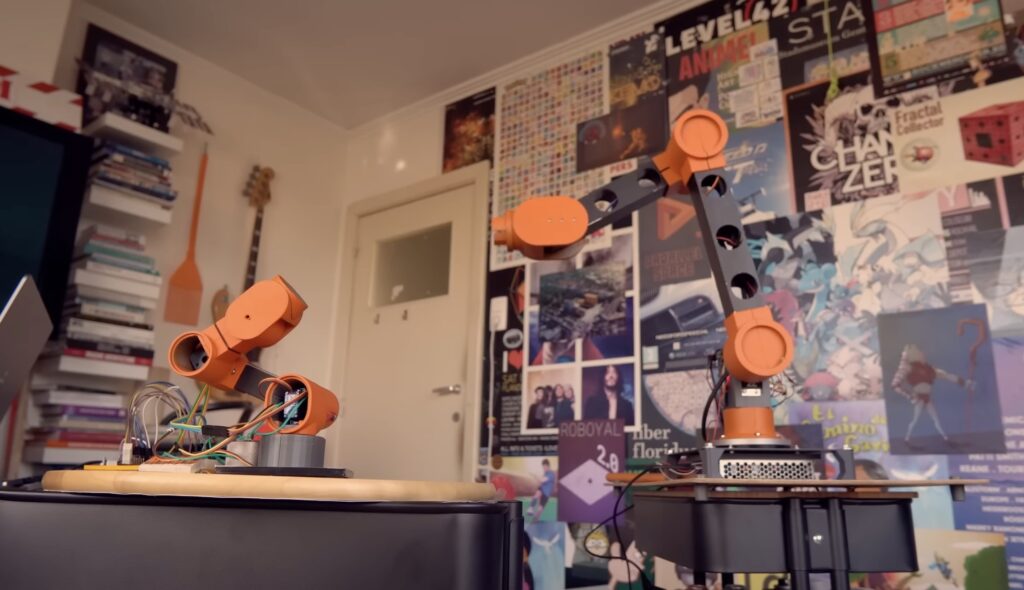Micro robot arm controls macro robot arm

Building a capable robot is only half of the battle. To take advantage of that robot, you’ll need a good way to control it. When it makes sense, you can pre-program movements. But when you want to control a robot in real time, you need a suitable controller. Conventional joysticks and gamepads don’t translate well to robot arm movement, which is why Jelle Vermandere created a miniature robot arm to control a larger robot arm.
Vermandere built the larger robot arm in the past, but found that traditional control methods have several shortcomings. His solution was to build a small replica of that robot arm. He can manipulate the small robot arm by hand, and the large robot arm will mirror the movement. This digital puppetry works well, because Vermandere can direct each joint in a fluid and natural manner. This isn’t a new technique, but Vermandere does a great job of explaining how it works and how you might be able to achieve similar results.
The smaller robot arm has the same design as the larger. That means that any rotation of the smaller robot’s joints will translate to the larger; if the small robot’s elbow joint rotates 45 degrees, then so should the larger robot’s. That smaller robot has servo motors in each joint, which contain potentiometers for position feedback. An Arduino Nano 33 BLE board looks at that feedback data to determine the angle of each joint. It then passes that to the computer that controls the larger robot, which sets the larger robot’s joint angles to match.
An additional benefit of this setup is that the smaller robot can still work like a robot. It has servo motors in the joints, which the Arduino can control. So Vermandere can utilize the smaller robot for other tasks.